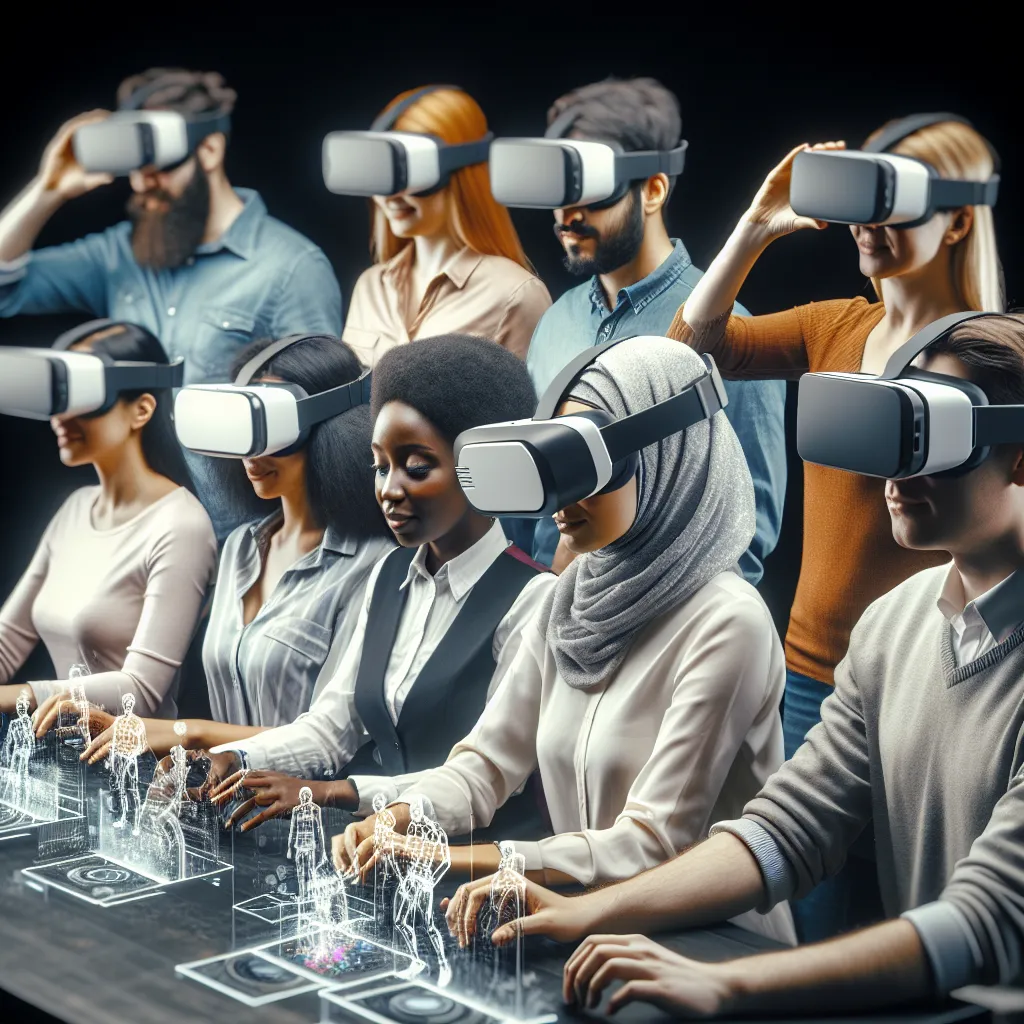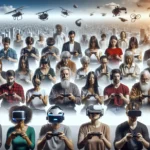Advancements in Virtual Reality Technology: What to Expect in the Near Future
Advancements in virtual reality (VR) technology have been rapidly evolving, promising an exciting future for immersive experiences. In the near future, we can expect significant developments in VR hardware, software, and content that will continue to redefine the way we interact with virtual environments.
One key area of advancement is the improvement of VR headsets and peripherals. Companies are investing heavily in developing lighter, more comfortable, and higher-resolution headsets to enhance the visual and ergonomic experience for users. The integration of eye-tracking technology and foveated rendering is also on the horizon, which will further enhance realism and performance while reducing the computational requirements.
Moreover, the evolution of haptic feedback systems will bring a new level of immersion to VR interactions. Advanced haptic gloves and suits are in development, offering users the ability to feel, touch, and interact with virtual objects, adding a new dimension to the sensory experience.
On the software front, artificial intelligence and machine learning algorithms are being integrated into VR applications to enable more realistic simulations and interactions. This will lead to smarter and more responsive virtual environments, opening up new possibilities for training, education, and entertainment.
Content-wise, the near future holds the promise of a vast array of diverse and compelling VR experiences. From interactive storytelling and virtual tourism to social VR platforms and immersive gaming, the breadth and depth of VR content are set to expand significantly, catering to a wide range of interests and preferences.
In conclusion, the future of VR technology is poised to deliver enhanced hardware, innovative software solutions, and an abundance of captivating content. These advancements will undoubtedly propel VR into the mainstream, transforming how we perceive and engage with virtual worlds.
The Impact of VR on Industries: Trends and Forecasts
Virtual Reality (VR) technology has been making remarkable strides in recent years, and its impact on various industries is becoming increasingly significant. The immersive and interactive nature of VR is revolutionizing the ways in which industries operate and engage with their audiences. One of the most prominent trends in VR technology is its integration into the healthcare sector. Medical professionals are utilizing VR for training, virtual surgeries, and therapeutic treatments, leading to better patient outcomes and enhanced learning experiences for healthcare professionals.
Another industry experiencing a notable impact from VR is the education sector. VR technology is being integrated into classrooms to create engaging and interactive learning environments. Students can take virtual field trips, conduct science experiments, and explore historical events, providing a hands-on approach to learning that enhances retention and comprehension.
Furthermore, the entertainment and gaming industries continue to be at the forefront of VR innovation. With the development of more advanced VR headsets and interactive experiences, the gaming landscape is evolving to offer players a more immersive and realistic gaming environment. Additionally, VR is making waves in the travel and real estate industries, allowing potential customers to take virtual tours of destinations and properties from the comfort of their homes.
Looking ahead, the global VR market is projected to experience substantial growth, with forecasts indicating an expansion into diverse sectors such as retail, manufacturing, and automotive. As VR technology becomes more accessible and affordable, businesses are expected to harness its capabilities for product design, virtual prototyping, and customer engagement. The integration of VR into retail experiences is anticipated to enhance customer satisfaction and provide a competitive edge for businesses.
In conclusion, the impact of VR on industries is multifaceted, with innovations continuing to redefine traditional practices across various sectors. As technology evolves and VR becomes more mainstream, its transformative influence is set to drive the future of industries in exciting and unprecedented ways.
Challenges and Opportunities in Shaping the Future of VR Technology
As VR technology continues to rapidly advance, it presents a wide array of challenges and opportunities that will shape its future development. One of the primary challenges is the need for improved hardware to achieve higher resolutions, wider field of view, and reduced latency. Additionally, creating more natural and intuitive interfaces remains a significant hurdle for VR technology, as current input methods can still be clunky and unnatural.
Despite these challenges, there are numerous opportunities for the future of VR. The integration of AI and machine learning into VR systems holds the potential to create more immersive and dynamic experiences. Furthermore, the application of VR in industries such as healthcare, education, and architecture presents exciting opportunities for growth and innovation. As VR technology becomes more accessible and affordable, the potential for widespread adoption and commercial success also continues to expand.
In order to shape the future of VR technology in a positive direction, it is crucial for industry leaders and innovators to address these challenges and leverage the opportunities at hand. Collaboration between hardware developers, software engineers, content creators, and end users will be essential in driving the evolution and acceptance of VR technology in the years to come.



